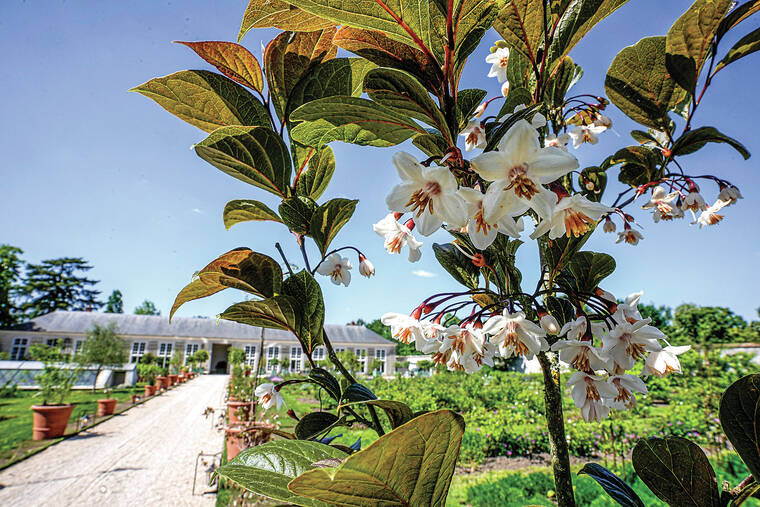Flower power and diplomacy: Versailles perfume gardens transport public back in time
VERSAILLES, France — The Versailles flower gardens were once a symbol of the French king’s expeditionary might and helped water-deprived courtiers perfume their skin. Now, they have been reimagined to give today’s public a glimpse — and a sniff — into the gilded palace’s olfactory past.
Holding secrets to the original concept of flower power, scents of Bulgarian rose, mint and citrus from hundreds of vividly colored historic blooms unveiled this week waft into the nostrils of paying visitors at the Chateauneuf Orangery of the Grand Trianon, transporting them back in time.
ADVERTISING
“Those discovering the gardens will, from flower to flower, understand what we loved in history,” Versailles Palace president Catherine Pegard said. “Many are the original scents.”
The aim of the Perfumer’s Garden is to unlock the mysteries and significance behind the scented flowers of the 17th-century French court — yet also remind us that it was no accident that the Versailles Palace was the very place where the job of perfumer was actually invented during that century.
The gardens sprawl in four sections, reimagining the vision of Sun King, Louis XIV, who wanted his grounds to overflow with the scents of orange blossom, hyacinth, tuberose and jasmine. The king had a practical reason for his obsessions: Following the plague that killed tens of millions of people in the Middle Ages in Europe, people feared that hot water could spread infection. Courtiers instead washed with alcohol rubs and used scents to mask bodily odors.
But there was also a diplomatic explanation for these floral obsessions: The king’s flower collection served as a means of projecting strength as France became the world’s greatest power in that century.
“Versailles was all about olfactory diplomacy in those days. Flower meant power. Dignitaries were impressed by the exotic flowers because only the king — who was now very powerful — had the money to fund expeditions to bring back exotic blooms,” said Giovanni Delu, one of the garden’s creators. “It’s a vegetal cabinet of curiosities.”
Delu said that court-funded expeditions brought back fashionable plants — many of which feature in the new perfumer’s gardens — from far-flung South Asia that were “nursed” or acclimatized in the French soil of Brittany, before being planted in Versailles. Any French nobleman who wanted to replant the prized flowers in his grounds had to first be granted a royal charter or face punishment.
The stories of Versailles’ modern gardeners convey the hidden intrigue, humor, knowledge and mystery the flowers once held. Vibrant historical anecdotes flow freely from their mouths, unveiling an unending trove of historical color. Legend has it that Louis XIV loved the orange blossom, as featured in the garden, so much that his courtiers doused themselves in it to curry favor, at one point causing the king to faint.
The scent from some blooms was so intense that the bulbs during this latest venture had to be physically separated in the gardens so that they didn’t conspire to produce an undesirable — or equally intoxicating — nasal mix.
There were unexpected twists in its conception. A “secret garden” — with four brick walls — was only properly discovered and renovated on the site recently, sending ripples of excitement among the Versailles gardening staff. Now a sanctuary, it has been adorned with plant species so delicate that only the head gardener has the right to handle them. One 17th-century plant now growing there called the firethorn — which leaves a delightful citrus smell on the fingers when rubbed — is prized and feared because it literally catches on fire with the slightest heat.
Another flower holds secrets in its petals to the love story of Louis XV, an obsessive botanist, and his mistress Madame de Pompadour.
“Louis XV sent botanical species ‘hunters’ around the world to bring species back, because he and his mistress expressed their love through a shared passion for flowers,” gardener Fulvia Grandizio said.
Grandizio claimed that Louis XV used one of the world’s very first prototype greenhouses here to nurse his plants — a version of which is on display now.
Lovingly caressing the flower with billowing pink-red petals called the calycanthus, Grandizio said nostalgically it was Madame de Pompadour’s favorite.


